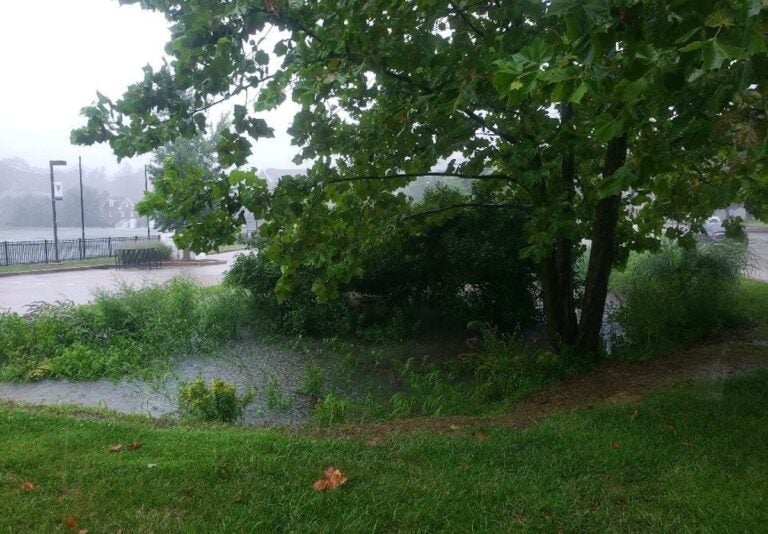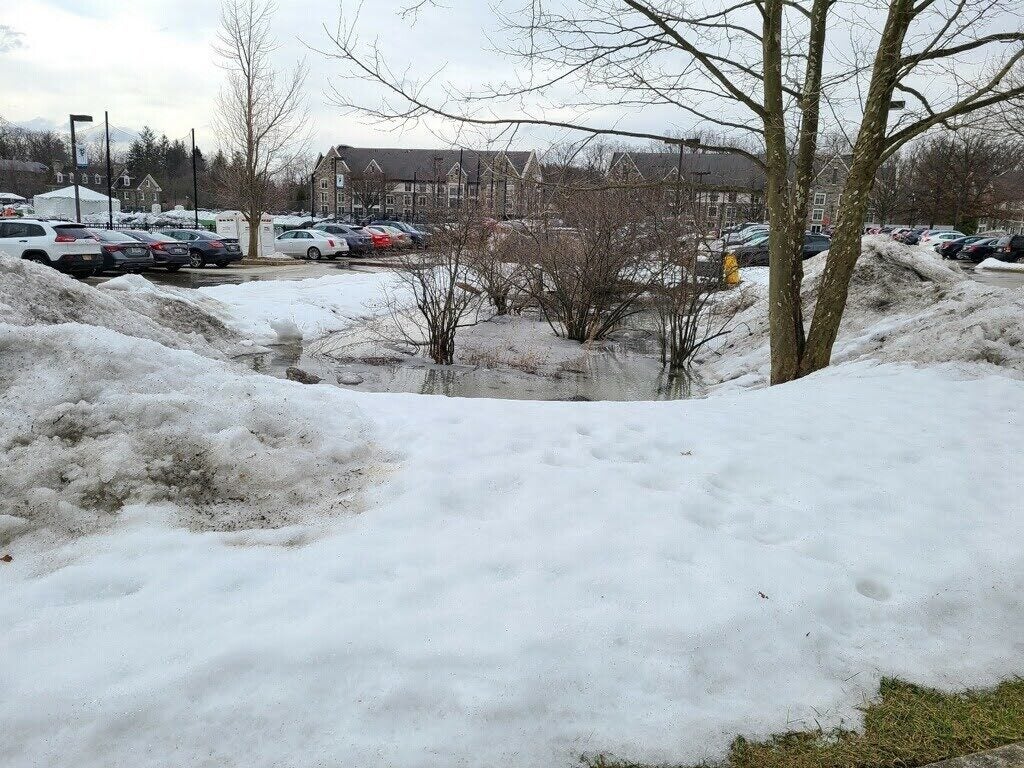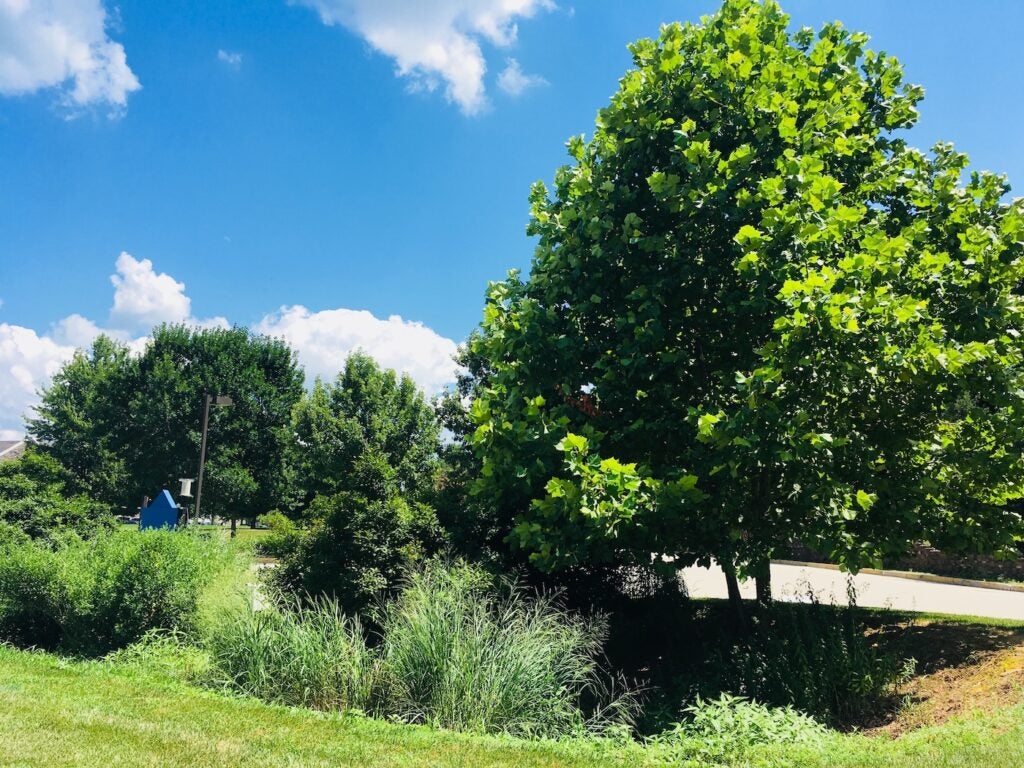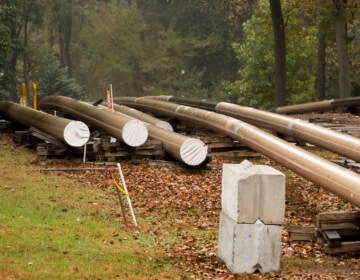Villanova University rain garden shows 20-year success at soaking up stormwater runoff
The school's rain gardens have proven effective at helping prevent raw sewage from overflowing into waterways.
Listen 1:17
After more than 20 years of monitoring, researchers at Villanova say the university’s rain garden continued to be effective at soaking up stormwater and preventing pollution from entering waterways. (Courtesy of Villanova University)
This story is part of the WHYY News Climate Desk, bringing you news and solutions for our changing region.
From the Poconos to the Jersey Shore to the mouth of the Delaware Bay, what do you want to know about climate change? What would you like us to cover? Get in touch.
Intense rainfall has increased in the Philadelphia region, and with climate change, scientists predict it will worsen over time.
Rain forecasts not only threaten the region with flooding. Storms put waterways at risk of increased pollution that washes off streets and buildings, as well as sewage overflows.
Older cities like Philadelphia and Camden have outdated sewer systems that accept stormwater and raw sewage in the same pipes. During heavy rains, these systems often overflow — spilling stormwater runoff and sewage into rivers and streams.
Rain gardens could be part of the solution, according to recent Villanova University findings. After more than 20 years of monitoring, researchers say the university’s rain garden has effectively soaked up stormwater and prevented pollution from entering waterways.
The researchers evaluated whether the rain garden was successful as it aged, and during various weather patterns.

“Overall, what we ended up seeing is that the system can manage a lot of the water that’s coming in off the watershed. And we’ve seen that it’s been able to consistently do that over time,” said researcher Bridget Wadzuk, associate director of the Villanova Center for Resilient Water Systems.
Cities across the U.S. are turning to rain gardens to manage intense storms, particularly as state and federal regulations require them to reduce 85% of stormwater and sewage overflow.
As much as 15 billion gallons of raw sewage and polluted stormwater make their way into Philadelphia’s waterways every year, according to a 2023 new report by PennEnvironment.
In 2011, Philadelphia launched a 25-year plan known as Green City, Clean Waters, to reduce the amount of sewage entering the city’s waterways by using green infrastructure and expanding stormwater treatment capacity.
The Philadelphia Water Department said since the initiative began, it has reduced overflows by 3 billion gallons by utilizing technology composed of natural elements, including rain gardens, to soak up stormwater.
Rain gardens act like pools that collect stormwater and utilize plants and soil capable of soaking up water and pollutants from buildings and roads.

Residents in the region and nationwide have also been encouraged to build rain gardens on their lawns to reduce flooding and prevent runoff from their roofs and driveways from entering their watersheds.
Villanova’s Wadzuk said studies about green stormwater infrastructure typically last only a few years.
However, the university was able to use U.S. Environmental Protection Agency and Pennsylvania Department of Environmental Protection funding to monitor the site over a couple of decades.
The researchers found that a rain garden’s success largely depends on a well-maintained and diverse range of plants and the ability to manage each function of the rain garden separately.
Rain gardens usually work in a drainage area of no more than 1.5 acres, Wadzuk said. However, a series of rain gardens can be built in larger areas, she said.
“When we say, ‘Are these effective at a large scale?’ Yes,” Wadzuk said. “But not necessarily just one giant rain garden, but rather have rain gardens distributed throughout a watershed, I think is a very effective way.”
She added that it’s crucial that rain gardens are placed strategically, maintained, and inspected over time. Wadzuk said she believes utilizing alternative stormwater management practices, such as rain gardens, can better prepare cities and other areas for various challenges.
“[They] can then offer that redundancy and the resilience in the system that I think is needed because of the uncertainty of how climate change is going to impact the area,” she said.
Rain gardens also increase biodiversity, attract pollinators and herbivores, and mitigate heat, Wadzuk said. She said communities should be educated on these benefits, motivating residents to become stewards of rain gardens.
“I really like the wider view of what green stormwater infrastructure can do,” Wadzuk said. “It’s not just stormwater management, but it has all of these other different benefits, to a city and to the people who live in the city.”

Get daily updates from WHYY News!
WHYY is your source for fact-based, in-depth journalism and information. As a nonprofit organization, we rely on financial support from readers like you. Please give today.







